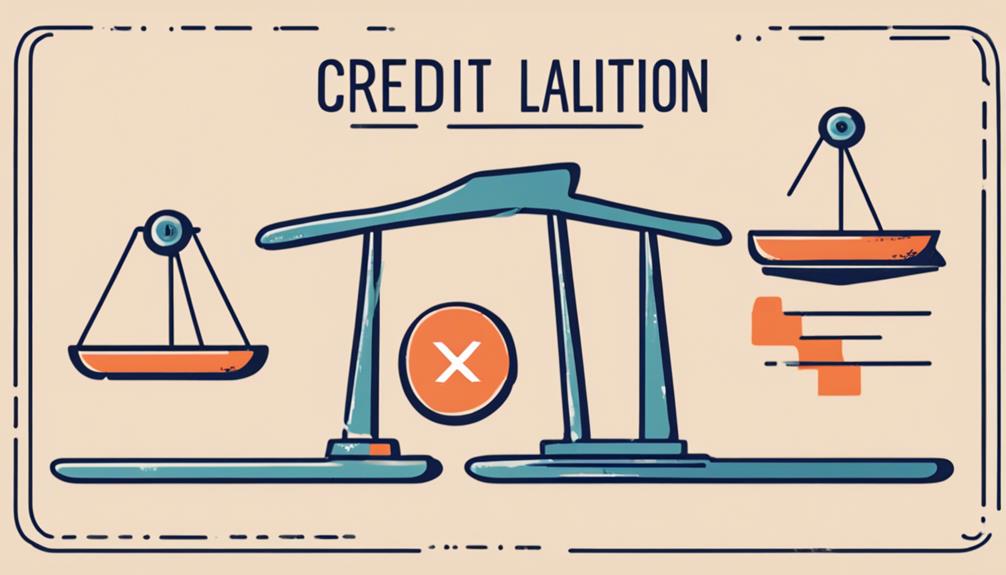As you prepare for tax season, it’s vital to understand the distinction between tax deductions and tax credits. These two mechanisms can greatly impact your tax liability, but they work in fundamentally different ways. Knowing how to leverage both deductions and credits can help you optimize your tax savings – and that’s where the real payoff lies. Whether you’re filing your taxes yourself or working with a professional, comprehending the nuances between these two concepts will guarantee you’re taking full advantage of all available opportunities to reduce what you owe.
Key Takeaways
- Tax deductions lower taxable income, while tax credits directly reduce the amount of tax owed.
- Credits are more valuable as they provide a dollar-for-dollar reduction in tax liability.
- Deductions depend on tax bracket, while credits do not.
- Credits can be refundable, meaning they can result in a tax refund, but deductions cannot.
- Eligibility requirements and the application process differ between deductions and credits.
What Are Tax Deductions?

Tax deductions are reductions to your taxable income. They lower the amount of income on which you’re required to pay taxes, effectively reducing your tax bill. There are two main types of tax deductions: itemized deductions and the standard deduction.
Itemized deductions are expenses you can claim individually, such as mortgage interest, charitable donations, and medical expenses that exceed a certain threshold. They allow you to lower your taxable income by the total amount of your qualified expenses. In contrast, the standard deduction is a fixed amount that’s subtracted from your taxable income regardless of your actual expenses.
Deciding whether to itemize deductions or take the standard deduction depends on your specific financial situation. Generally, you’ll want to choose the option that results in the lower overall tax liability. Understanding the differences between tax deductions can help you maximize your tax savings and stay compliant with IRS regulations.
What Are Tax Credits?
Tax credits are a direct reduction of the amount of tax you owe. There are various types of tax credits, ranging from credits for education expenses to credits for renewable energy investments. Tax credits are generally more valuable than tax deductions, as they directly lower the tax you must pay.
Definition of Tax Credits
A tax credit is a direct reduction in the amount of taxes you owe the government. It’s a dollar-for-dollar reduction, meaning a $1,000 tax credit will reduce your tax bill by $1,000. Tax credits can be either refundable or nonrefundable.
Refundable tax credits are the most valuable type of credit. If the amount of the credit exceeds your total tax liability, the government will issue you a refund for the difference. For example, if you have a $2,000 refundable credit and only owe $1,500 in taxes, you’ll get a $500 refund. Nonrefundable tax credits, on the other hand, can only reduce your tax bill to zero – you won’t receive a refund for any remaining credit.
Both types of credits can provide significant tax savings, but refundable credits offer the most benefits, especially for low-income taxpayers. Understanding the difference between these two can help you maximize your tax savings.
Types of Tax Credits
Although tax credits come in various forms, they all provide valuable savings by directly reducing the amount of taxes you owe.
There are two main types of tax credits: refundable and non-refundable. Refundable tax credits can reduce your tax bill below zero, resulting in a tax refund. Non-refundable tax credits, on the other hand, can only reduce your tax liability to zero.
Some common examples of tax credits include:
- Child Tax Credit: Reduces your taxes by up to $2,000 per qualifying child.
- Earned Income Tax Credit: Provides a refundable credit for low-to-moderate-income working individuals and families.
- American Opportunity Tax Credit: Helps cover the cost of higher education expenses.
Regardless of the type, tax credits are more valuable than deductions because they directly lower the amount of tax you owe, dollar-for-dollar. Understanding the different types of tax credits can help you maximize your tax savings.
Benefits of Tax Credits
Tax credits offer numerous benefits that make them a valuable tool for reducing your tax liability. One of the primary advantages of tax credits is their ability to directly reduce the amount of taxes you owe, dollar-for-dollar. This means that if you qualify for a $500 tax credit, your tax bill will be reduced by $500, regardless of your tax bracket.
Improving your tax credit eligibility can be achieved by carefully reviewing the criteria and requirements for various credits, such as the Earned Income Tax Credit, the Child Tax Credit, or the Lifetime Learning Credit. By understanding these rules and ensuring you meet the necessary qualifications, you can maximize the benefits of tax credits and optimize your overall tax savings.
Moreover, properly utilizing tax credits can help you manage your cash flow and improve your financial planning. By reducing your tax burden, you may have more disposable income to allocate towards other important financial goals, such as saving for retirement or paying down debt.
Key Differences Between Deductions and Credits

When it comes to reducing your tax liability, the distinction between tax deductions and tax credits is essential. Tax deductions lower your taxable income, whereas tax credits directly reduce the amount of tax you owe. Here are the key differences between the two:
- Impact on tax liability: Deductions reduce your taxable income, which can result in a lower tax bill, but the savings depend on your tax bracket. Credits, on the other hand, provide a dollar-for-dollar reduction in the taxes you owe, making them more valuable.
- Refundability: Most tax credits are refundable, meaning you can receive a tax refund if the credit exceeds your tax liability. Deductions, however, only reduce your tax liability and cannot result in a refund.
- Eligibility: The eligibility requirements for deductions and credits can vary considerably, so it’s important to understand which ones you qualify for based on your specific circumstances.
The choice between deductions and credits can have a substantial impact on your tax situation, so it’s imperative to weigh the benefits of each when filing your return.
Calculating Tax Deductions
Typically, calculating your tax deductions involves subtracting eligible expenses from your total income. This process helps minimize your tax liabilities by reducing the amount of income that’s subject to taxation. The key is to keep detailed records of your qualifying expenses throughout the year, such as mortgage interest, charitable contributions, and business-related costs.
Once you have compiled your deductible items, you’ll need to determine which ones you can claim and the corresponding dollar amounts. This may require consulting tax publications or speaking with a professional. Remember, the IRS has specific rules and limitations around deductions, so it’s essential to understand the applicable guidelines.
Claiming Tax Credits

There are various types of tax credits you can claim, each with its own eligibility requirements. From the child tax credit to the earned income tax credit, understanding the criteria for each can help you maximize your tax savings. Familiarize yourself with the different tax credits available to guarantee you’re taking advantage of all the deductions you qualify for.
Types of Tax Credits
Tax credits can provide significant financial benefits to taxpayers who qualify for them. These credits directly reduce the amount of tax you owe, giving you a dollar-for-dollar reduction in your tax liability. There are several types of tax credits available, each with its own unique features and requirements.
- Refundable tax credits: These credits can result in a tax refund even if the credit amount exceeds your total tax liability. The Earned Income Tax Credit and the Child Tax Credit are examples of refundable tax credits.
- Non-refundable tax credits: These credits can only be used to offset your tax liability and will not result in a refund. The Lifetime Learning Credit and the Residential Energy Efficient Property Credit are examples of non-refundable tax credits.
- Partially refundable tax credits: Some credits, like the American Opportunity Tax Credit, have both a refundable and a non-refundable component, providing a mix of these two types of credits.
Understanding the different types of tax credits and their characteristics can help you maximize your tax savings and guarantee you’re taking advantage of all the credits you’re eligible for.
Eligibility Requirements
Eligibility requirements for claiming tax credits can vary considerably. You’ll need to meet specific qualifying factors to claim certain tax credits on your return. The application process can also differ from one credit to the next.
| Credit | Qualifying Factors | Application Process |
|---|---|---|
| Child Tax Credit | – Have a qualifying child under age 17 – Meet income limits |
– Claim on your tax return |
| Earned Income Tax Credit | – Have earned income from employment, self-employment, or certain disability payments – Meet income limits |
– Claim on your tax return |
| American Opportunity Tax Credit | – Be pursuing a degree or other recognized education credential – Meet income limits |
– Claim on your tax return or have your school provide the information |
Thoroughly understanding the eligibility requirements is essential to maximize the tax credits available to you. Be sure to review the guidelines carefully when filing your tax return.
Maximizing Tax Savings
Maximizing your tax savings starts with understanding the key differences between tax deductions and tax credits. While both can help reduce your tax liability, they operate in distinct ways. Tax deductions lower your taxable income, whereas tax credits directly reduce the amount of tax you owe.
To maximize your tax savings, consider the following strategies:
- Identify eligible tax deductions: Explore deductions for mortgage interest, charitable donations, business expenses, and more. Keeping meticulous records can help you claim the maximum allowable deductions.
- Leverage tax credits: Tax credits, such as the Earned Income Tax Credit, the Child Tax Credit, and the Retirement Savings Contributions Credit, can provide a dollar-for-dollar reduction in the taxes you owe. Familiarize yourself with the eligibility requirements for these valuable tax credits.
- Optimize your tax strategy: Consult with a tax professional to develop an extensive tax strategy that combines both tax deductions and tax credits to increase your overall tax efficiency and minimize your tax burden.
Common Deductions and Credits

Amid the vast array of tax deductions and credits, several stand out as particularly remarkable. For starters, the mortgage interest deduction can be a game-changer for homeowners, allowing you to reduce your taxable income by the interest paid on your home loan. Similarly, the charitable contributions deduction enables you to lower your tax bill by supporting causes close to your heart.
When it comes to credits, the Earned Income Tax Credit (EITC) is a powerful tool for low to moderate-income individuals, potentially providing a sizable refund. The Child Tax Credit, on the other hand, can be a significant boon for families, helping offset the costs of raising children. These tax planning strategies can have a substantial impact on your personal finance considerations, so be sure to explore them thoroughly when filing your return.
